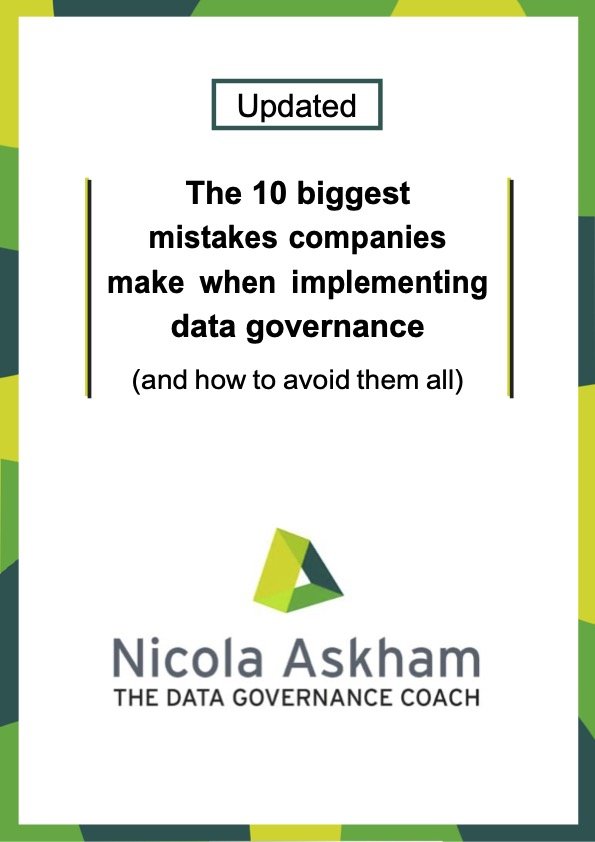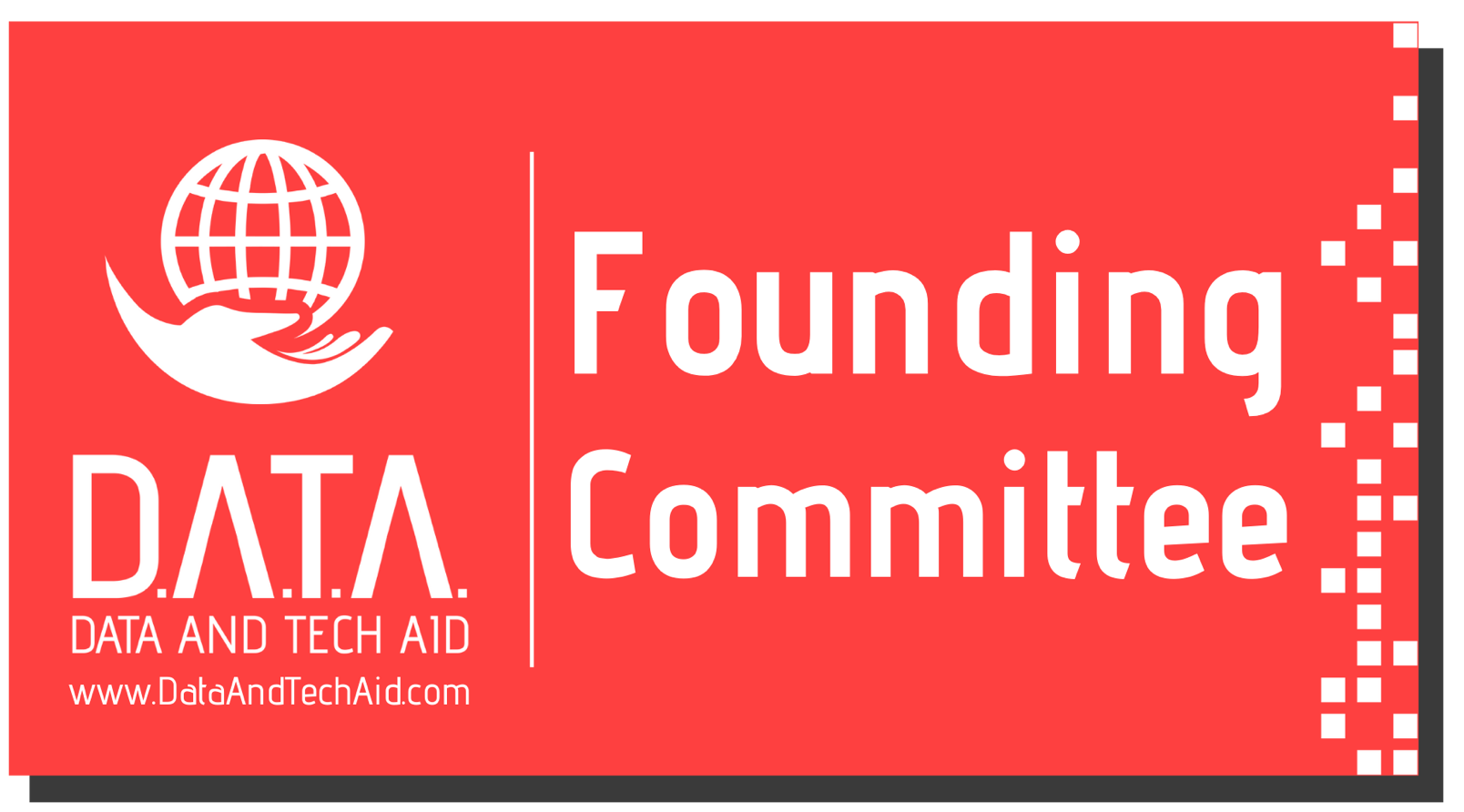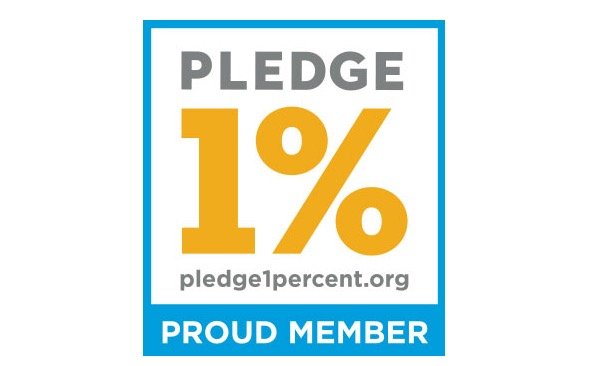How to use a Lean Approach to Data Governance
/Getting a data governance initiative started can be extremely challenging. This is especially true if you work in an unstructured manner, trying to start too many tasks at the same time or doing things in the wrong order.
Over the years I have developed my own methodology for implementing Data Governance successfully. This is based on my experience of what has worked successfully (as well as what hasn’t) over many years of implementing Data Governance. Although I got into Data Governance by accident when I was a Project Manager, I had never particularly considered whether a lean approach could be applied. So, when I was first asked whether a Lean approach would work for implementing Data Governance, I decided to look into it.
It didn’t take me long to realize that I have incorporated some of the lean principles into my approach without realizing it and that a lean approach would definitely be a good way to structure a Data Governance implementation.
To be successful, data governance needs to be implemented iteratively and efficiently and that is why applying lean principles to data governance works so well.
What is Lean?
Lean was originally created by Toyota to eliminate waste and inefficiency in its manufacturing operations. The process became so successful that it has been embraced in manufacturing sectors around the world and is now used in many different industries as it can improve how teams work together.
The goal of lean is to eliminate waste, i.e. the non-value-added components in any process. The idea being that until a process has gone through lean multiple times, it contains some element of waste. When done correctly, lean can create huge improvements in efficiency, cycle time, and productivity, which leads to lower costs and improved competitiveness.
The Lean Enterprise Institute (LEI), founded by James P. Womack and Daniel T. Jones in 1997, is considered the go-to resource for lean wisdom if you want to learn more about the details, but for this blog I want to focus on why it is a good approach for Data Governance.
Lean principles are all about the following initiatives:
Empowering small teams
Reducing cycle times
Gradually eliminating waste
Focusing on value
So let’s look at each of these in turn:
Empower Small Teams
Lean improvements start with people, and the same can be said for data governance. Applying lean principles allows you to focus on your team first.
Instead of creating a huge project team to implement data governance, setting up a small central team to support users across your whole business will have greater success.
Rather than being responsible for all data, a small data governance team can focus on:
Identifying and maintaining existing data management activities
Providing a framework for managing and aligning existing data management activities, and planning for future activities
Coordinating the implementation of the data governance framework
Acting as a liaison between the Business and IT to verify that business requirements are fully understood by IT and ensure the business is fully engaged in IT led projects
Reduce Cycle Times
Many data governance initiatives fail because they are too big in scope, cost, and timescales. Working on small phases or projects will more likely lead to success. For example, try executing one process in a business area. When that is completed, implement that same process in the next business area. Don’t try to achieve too much at once; if the data governance programme is too large and unstructured, the benefits will not be delivered efficiently and the entire programme might get stopped. If you focus on small areas of scope, you are likely to achieve small but consistent successes in the implementation of your data governance framework.
Gradually Eliminate Waste
Implementing a data governance program through small frequent phases (or projects) allows you to use the lean problem solving approach: The Plan – Do – Check – Adjust (PDCA) Cycle.
For example, the initial plan step would review the business area you are intending to implement data governance in and take measures to fully understand the current situation. What are the priorities and challenges in that area? This knowledge will enable you to plan the implementation for a data governance framework that will benefit that area.
In the do phase, you will implement the framework and identify and brief various stakeholders about their roles and responsibilities. During this phase, prepare stakeholders to start following one of the data governance processes or activities, such as defining data items for a data glossary, or using a data quality issue resolution.
Next you check the results of the do phase, confirm they align with expectations, and identify what can be learned from the experience. Determine if anything should be done differently next time.
Finally based on the insight gained, you can either adjust your approach before planning to implement the framework in a new business area or move back to the do stage to make changes in the first business area.
Focus on Value
Taking inspiration from George Orwell’s Animal Farm, we could say that all data is equal, but some data is more equal than others. Lean uses prioritization techniques to focus on areas where you can gain the most value, and the same approach can be applied to managing data. You can’t achieve value from managing all of your data with the same level of monitoring and control. The highest level of monitoring and control should only be applied to the most critical data, needed to successfully run your business (I talked about this in more detail in this recent blog). Applying lean principles and prioritising data governance activities for data that adds the highest value for the lowest effort will help engage stakeholders and demonstrate the benefits of data governance, while long-term activities (i.e. high value and high effort) progress.
Business engagement is absolutely vital to the success of all data governance activities, and underpinning these activities with the solid foundation of a data governance framework will help you achieve lasting data governance success.
Don’t try to do too much at one time. If your data governance initiative is unwieldy, it will be too big to get started and too slow to deliver benefits. Applying a lean approach to data governance can help you work iteratively, checking and improving as you go and focusing your efforts on activities that will deliver the greatest value to your organization.
My Data Governance Checklist gives you a structured approach to design and implement a successful Data Governance Framework. You can download the free version of this checklist here.








